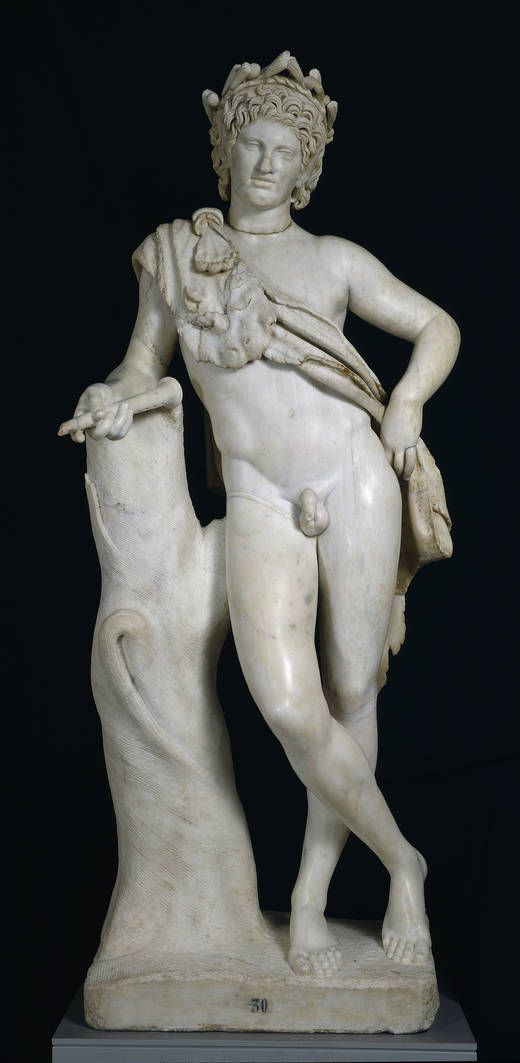 | ||
Similar Apollo Sauroctonos, Aphrodite of Knidos, Diadumenos, Hermes and the Infant Dio, Capitoline Antinous | ||
The resting satyr augmented reality in the eskenazi art museum
The Resting Satyr or Leaning Satyr, also known as the Satyr anapauomenos (in ancient Greek ἀναπαυόμενος, from ἀναπαύω / anapaúô, to rest) is a statue type generally attributed to the ancient Greek sculptor Praxiteles. 115 examples of the type are known, of which the best known is in the Capitoline Museums.
Contents
- The resting satyr augmented reality in the eskenazi art museum
- Description
- Attribution
- List of other known ancient copies
- References
Description
It shows a young satyr, identifiable from his clearly pointed ears and the pardalide (panther pelt) worn across his torso. He rests his right elbow on a tree trunk, in an unstable position, supported only on his left leg. His right leg is bent, with his right foot just touching his left heel. In a number of examples a restorer has added an attribute held in his right hand, often a flute or Pan pipes, while the left hand is on the left hip holding down the pelt. The facial features are well defined and the nose slightly upturned. His heavy hair, recalling the iconography of river gods, is held by a cord or a crown.
Attribution
The Resting Satyr is traditionally identified as the "satyr periboêtos" mentioned by Pliny the Elder in his Natural History XXXIV, 69:
"[Praxiteles produced in bronze] a Liber Pater, and a famous Drunkard, and a satyr that the Greeks call periboêtos(et Liberum patrum Ebriatem nobilemque una satyrum quem Græci periboeton cognominant)Since Winckelmann this word has traditionally been translated as "famous". This celebrity explains the large number of examples of this type, one of the most popular in the Mediterranean - just under 115 have been found, including 15 from Rome, 4 from North Africa, 8 from Greece, two from Spain and one from Gaul.
